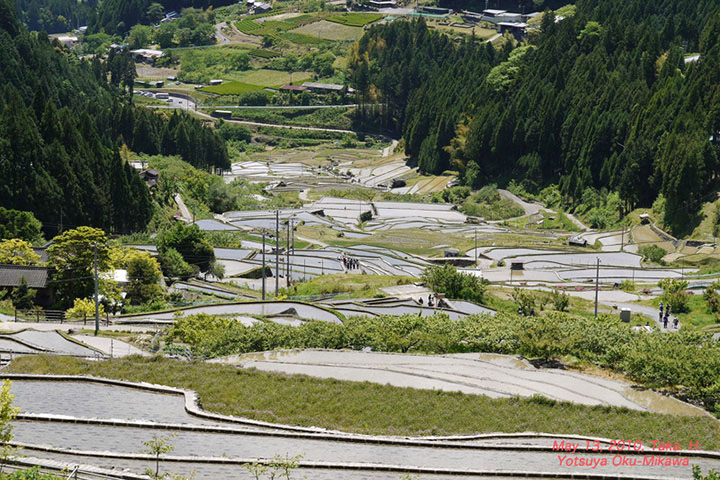Suzaku Garden of Umekohji Park
56-3 Kankiji-cho Shimogyo-ku Kyoto
Umekohji Park is a city park with the function both of the space for the relaxation
and of the place of refuge for a disaster.
There is the garden with a pond in the center, "Suzaku garden"
that makes us feel the traditional and the new.The garden was opened in April in 1995, and we can enjoy Momiji valley,
Field lines "Nosuji", Water Stream "Yarimizu", Water Mirror "Mizukagami" etc.Above all, the pond which a black granite stone was used for
is called "Mizukagami" and is the charm of this garden.
I visited here on May 15, 2009.
I advance from the entrance of the second floor of a green hall to the south,
and went out to the garden. I could soon find the Water Mirror.
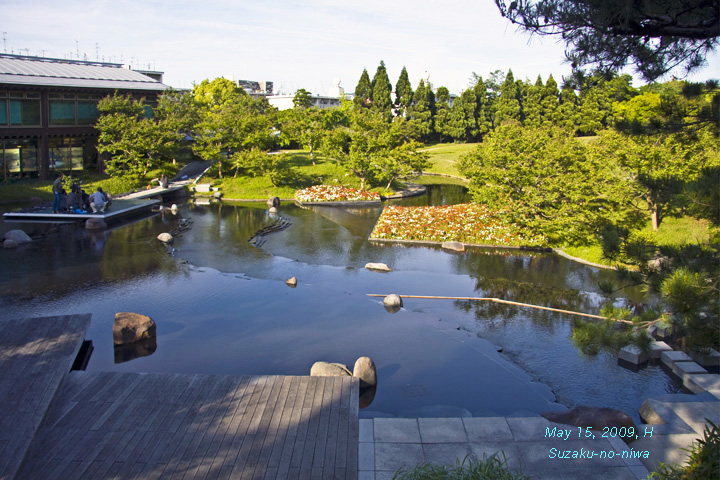
Water Mirror "Mizu-kagami" seen from the southwest.
The building on the left hand is the Green hall "Midori-no-yakata".
The afternoon sun lights up from the left back.
The next photo is for the north scenery, seen from the stepping stones
of the perfect square which are on the right of the upper photograph.
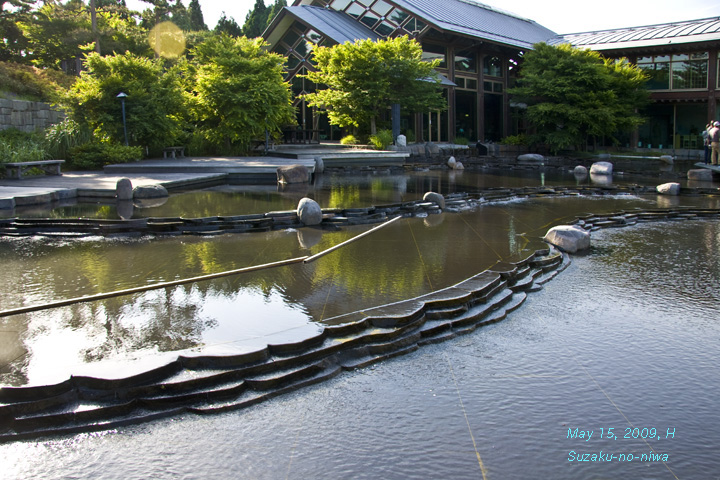
I confirmed the degree of the step difference of the Water Mirror from the south side.
The next photo is the Water Mirror seen from the "Nosuji" the east side of this garden.
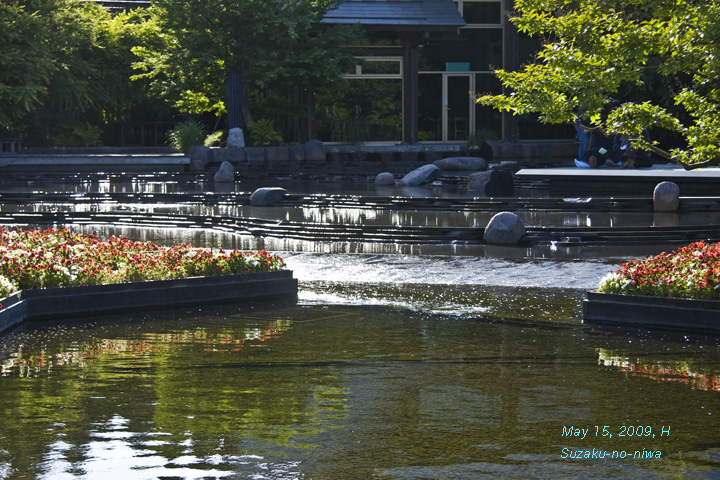
I watched the southwestern direction from the building side.
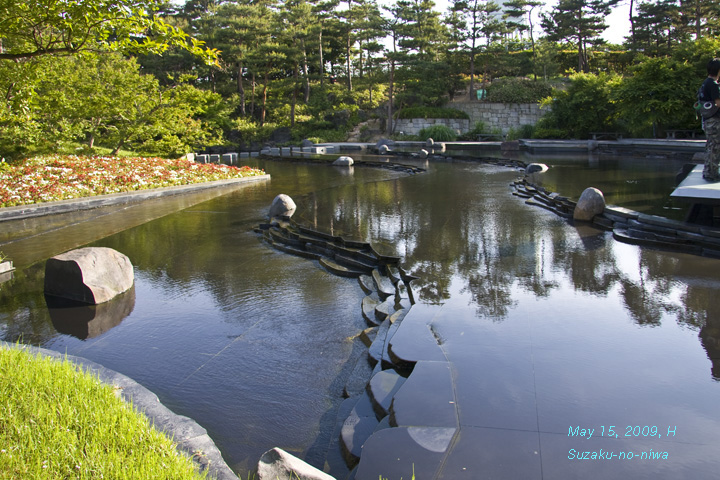
The pine of the opposite side, the sky and the clouds are reflected on the Mizukagami.
Finally, I looked down the south side through the glass window from the second floor of the Green Hall.
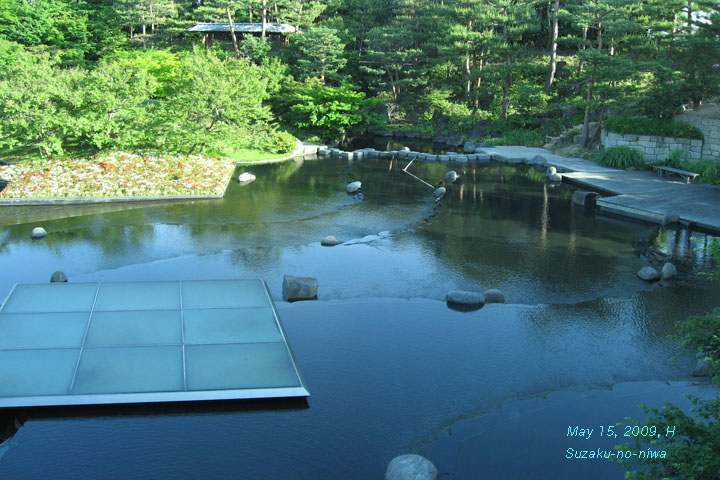
I watched Water Mirror "Mizukagami" from four directions in this way.
I could fully enjoy the charm of the "Mizukagami".
It seems to me that the Suikei-en garden of the Keihanna Commemorative Park was also created by the same idea.
Both "Mizukagami (water mirror)" of the Suzaku Garden, and "Suikei dana(shelf)" of the Keihanna Commemorative Park,
remind me of the images of terraced rice fields "Tanada" and the romance of "the moon reflected in each rice fields".
It seems to me that the former is flat plate-like, digital and urbane or sophisticated,
whereas the latter is three-dimensional, analogue and rural or pastoral.
As an example of satoyama (rural nature) of the original scenery of Japan,
I will introduce the one thousand pieces of terraced rice fields "Senmaida of Yotsuya" in Shinshiro city, Aichi Prefecture.
The information was offered by Mr. HAYASHIDA Takanori.
The terraced rice fields spreading on the southwest slopes of Kurakakeyama Hill seem to be
about from 220m to 430m above sea level, and the altitude difference seems to be about 210m.
I will show the image of the terraced rice fields which I looked down from the heights.
